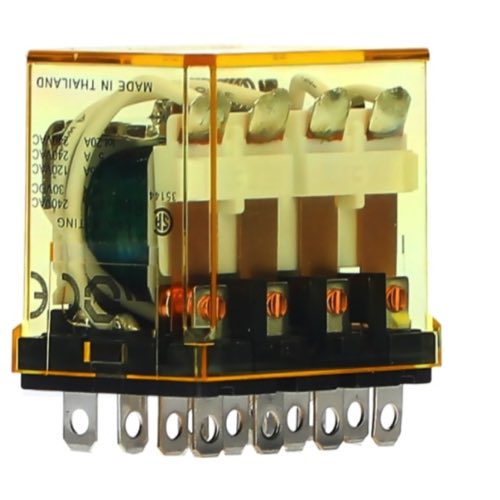Force Guided Relays

Force guided relays, also known as safety relays, are an essential component in safety circuits for a variety of safety-critical applications. These relays are characterized by their force guided contacts, ensuring that a normally open contact (NO) and a normally closed contact (NC) cannot be closed simultaneously, a principle crucial for safety integrity. This feature is particularly important in applications such as emergency stop switches, light curtains, and interlock switches, where the reliable detection of both open and closed contact states is vital for ensuring safe operation.
In force guided relays, the contacts are mechanically linked, meaning that a failure in one contact, such as a welded closed contact, will prevent the other contacts from moving to an incorrect state. This design offers high diagnostic coverage, making these relays an ideal choice for monitoring safety devices and safety systems in industrial settings. The technology behind these relays allows for the monitoring of the relay's state, ensuring that any failure or malfunction can be quickly identified and addressed.
More Information about Force Guided Relays
Safety relay modules and safety controllers often incorporate force guided relays due to their reliability and compliance with safety regulations like the Machinery Directive. These modules and controllers are used to process signals from safety devices and execute the necessary safety function, with the force guided relay ensuring that these functions are carried out without fail.
The durability and longevity of force guided relays are also crucial, as they are designed to maintain their integrity over the entire service life of the machinery or system they are part of. High-quality contact materials are used to ensure consistent performance under various operating conditions. Some force guided relays are also designed for PCB mounting, offering a compact and integrated solution for various safety applications.
FAQs
Can forcibly guided contacts be added to a standard relay in such a way that the relay can be used in the process industry?
No, forcibly guided contacts cannot simply be added to a standard relay, as force guided relays require a specific mechanical design to ensure safe operation and are purpose-built for use in safety-critical applications, including the process industry.
What is a Relay & How it Works
What is a relay?
A relay is an electrically operated switch. Most relays use an electromagnetic to operate the switch. An electromagnet is a device that creates a magnetic field by passing an electrical current through a coil of wire. The magnetic field is then turned off when the current is removed.
Why use relays?
Relays are commonly used when there is a need to control a switch with high voltage or circuits with large amounts of current passing through them. Operating these types of switches manually can be dangerous, inefficient and impractical. By using relays, operational safety is increased while also providing the ability to use smaller, safer and less expensive electrical equipment to control devices. Using relays allow for control of several devices on a single switch, as opposed to using several switches for each device. Relays can be combined with timers and logic circuits to assist in electrical automation.
How do relays work?
A relay consists of two separate circuits that work together to open or close a switch (or contacts). The first circuit drives the coil (or electromagnet). The electricity passes through the coil, creating a magnetic field. The second circuit contains a set contacts and a separate power source. This circuit is what provides power to the electrical load.
When electricity passes through the coil, it creates a magnetic field. This magnetic field pulls the contact from the other circuit closed (or against the stationary contact) which will allow current to pass through the contacts, therefore allowing the load to become energized. When the coil is de-energized, the magnetic field is gone which allows the contact to be pushed back into its original state, de-energizing the load side of the circuit.

